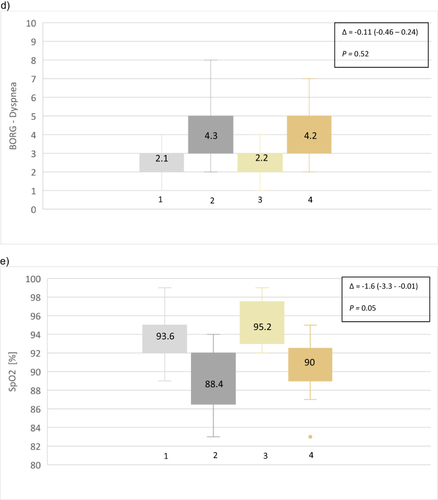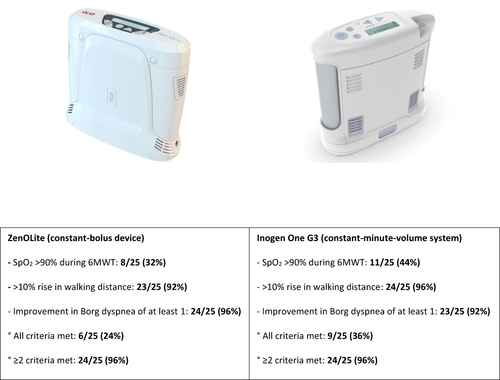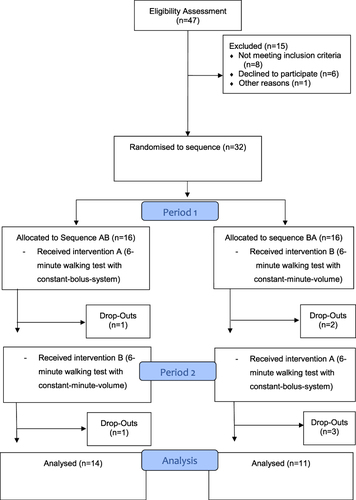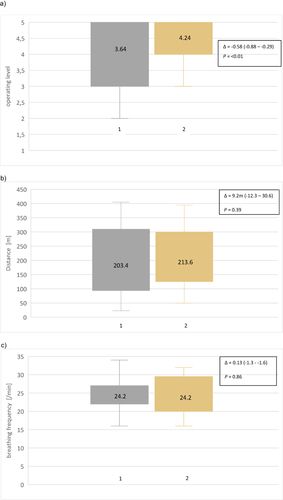Figures & data
Table 1 Titration Algorithm for Establishing the Operating Level of Each Oxygen-Conserving Device (OCD)
Table 2 Patient Characteristics at Baseline
Figure 2 (a) mean operating level of investigated devices after exercise. 1: 6MWT with constant bolus device. 2: 6MWT with constant minute volume device. (b) mean walking distance in 6-minute walking test for each device. 1: 6MWT with constant bolus device. 2: 6MWT with constant minute volume device. (c) mean breathing frequency in breaths/minute after exercise. 1: 6MWT with constant bolus device. 2: 6MWT with constant minute volume device. (d) mean difference in dyspnea before and after exercise for each device. 1: pre 6MWT with constant bolus device. 2: post 6MWT with constant bolus device. 3: pre 6MWT with constant minute volume device. 4: post 6MWT with constant minute volume device. (e) mean oxygen saturation in % before and after exercise with each device. 1: pre 6MWT with constant bolus device. 2: post 6MWT with constant bolus device. 3: pre 6MWT with constant minute volume device. 4: post 6MWT with constant minute volume device.

Figure 3 The two devices under investigation (constant-bolus- system and constant-minute-volume system) and their ability to reach success criteria.



